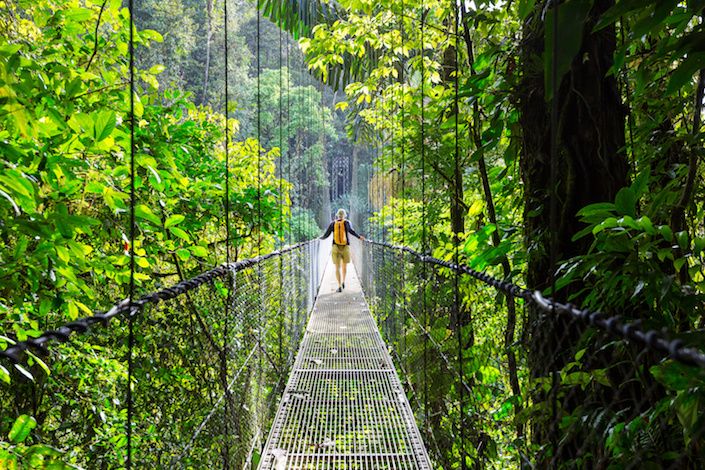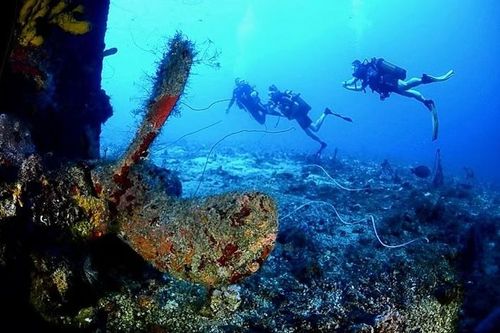Where travel agents earn, learn and save!
Travel & Selling Tips / Costa Rica's most unusual tours
Here's a list of some off-the-beaten-path tours perfect for all kinds of tourists

Costa Rica is one of the most biodiverse countries in the world. Here's a list of some off-the-beaten-path tours perfect for all kinds of tourists, including families.
Spot Leafcutter Ants
The dense rainforest houses thousands of species that play an essential role in the ecosystem, including a plethora of insects. With all of Costa Rica's incredible wildlife, it's too easy to overlook the smallest creatures, but leafcutter ants are some of the most fascinating animals you will find in Costa Rica. These ants live within a complex society of their own, and farm mushrooms underground using mulch chewed from leaves stripped from specific plants and trees. In the Sarapiquí region, a unique town and river area in the Heredia Province with incredible biodiversity, guided tours give visitors a close-up look at active leafcutter colonies. Participants will learn about colony caste divisions, see ants cut and transport leaves, and even spot the queen ant - all of which can normally not be seen without the assistance of an expert.
Fungi Tour
The rainforests near the equator have some of the highest fungal biodiversity on Earth. Costa Rica’s rainforests are an eco-tourist’s dream and are teeming with fungi kingdoms. Guided excursions to see the fungi of Costa Rica’s rainforests allow for the exploration of areas that are still being actively investigated by scientists, and aid in rainforest conservation efforts. Tours run throughout the year but are best enjoyed during the nation’s rainy season. There is a wealth of fungi kingdoms to explore, including day-long trails to see the fungi that cling to the oak trees of the Grecia Forest Reserve “Bosque del Niño” or bioluminescent fungi that grow in the cloud forest of Monteverde. Those staying in San Jose can even embark on these trails in La Cangreja National Park, which is just 20 miles outside of downtown. Costa Rica’s wild Fungi Trails are aimed at nature enthusiasts, and travellers will have the opportunity to find, identify, photograph, and in certain cases, even taste some of the world’s rarest fungi. The trails feature recreational and educational activities curated to promote the conservation of wild mushrooms at the local level through responsible and sustainable tourism, and local communities and indigenous knowledge are involved and integrated into the entire experience.
Cacao Tour
Cacao is grown across the Caribbean and South America but is particularly important in Costa Rica. It was a highly prized and sacred crop among the indigenous Chorotega and Bribri communities and was used as currency by the Chorotega up until the 1930s. With the creation and popularization of chocolate, the cacao bean became the cash crop of Costa Rica. The provinces of Guanacaste, Alajuela, Limón, Cartago, and Puntarenas, all contain thriving cacao plantations, which are perfect for any chocolate lover. These plantations offer experiences led by experts who will detail the history, culture, and traditions of chocolate and cacao, as well as the hidden secrets of bean fermentation and sun-drying. Travellers can personally roast and grind cacao beans, and make their own chocolate treats, including traditional Bribri ceremonial drinks.
Medicinal Plants
More than just a source of natural beauty, plants growing in Costa Rica have long been sources of traditional remedies. Indigenous populations across the country know how to identify the medicinal properties of the surrounding flora, and much of this knowledge has been passed through generations. To discover the diversity of plant life across regions in Costa Rica, travellers can visit the foothills of the Rincón de la Vieja volcano, La Fortuna, and the Southern Zone, where the indigenous have preserved the integrity of their traditional villages. Local experts offer hikes and nature walks through forests and fields where they identify the healing powers provided by trees, herbs, roots, and vines. Guides will educate visitors on the medical properties of plants like ginger, moringa, or chaya leaves, and tell the stories of the locals who cultivate them. The Medicinal Plants tours are interactive experiences where participants can feel and smell the plants to identify their textures and scent. At the same time, guides will explain how plants can prevent diseases such as cancer, diabetes, allergies, and stress.
Bat Tours
Costa Rica has more than 116 species of bats. These mammals control pest populations in crops, such as bananas and mangoes, and pollinate several plant species. In the Monteverde cloud forest or the Sarapiquí region, travellers can find interactive and educational tours led by highly trained and experienced guides that offer a whole new appreciation for these often-misunderstood creatures of the night. Travellers will learn about the diversity and abundance of bats in Costa Rica, their natural history, classification, adaptations, reproduction, threats, and more. On this tour, visitors will have a safe opportunity to observe some of the bats captured during the evening for research projects. Guests will leave the experience with a greater understanding of bat conservation's importance and ecological benefits.











